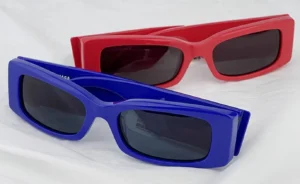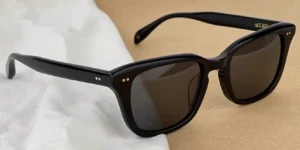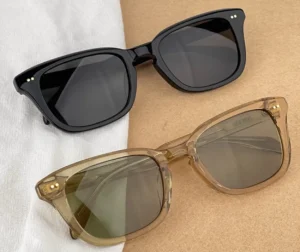Introduction
How to Select Your Sunglasses Manufacturer to Produce Your Eyewear is a crucial decision that impacts the quality, capabilities, pricing, and overall viability of your brand. With so many options globally, performing due diligence in assessing and vetting producers is essential to find an optimal long-term partner.

In this comprehensive guide, we’ll explore all the steps needed to make an informed decision when choosing a sunglasses factory. You’ll learn about:
- Researching and comparing manufacturer qualifications
- Understanding sunglasses supply chain integrations
- Evaluating infrastructure and production capacities
- Assessing experience with various product lines
- Vetting quality control procedures and certifications
- Comparing pricing models and minimums
- Understanding order workflows and lead times
- Verifying compliance and social responsibility
- Performing site visits for further due diligence
- Negotiating contracts and payment terms
- Navigating shipment logistics and inventory management
- Building strong working relationships and communications
- Switching manufacturers if needed
By the end, you’ll feel equipped to perform thorough manufacturer analysis, vetting, and selection when sourcing custom sunglasses manufacturers’ production. Let’s dive in!
Chapter 1: Research and Comparison of Sunglasses Manufacturer Qualifications
The first step in finding a viable sunglasses producer is researching the universe of possibilities and directly comparing credentials. Key aspects to assess include:
Years in Business – Look for firms with 5+ years in eyewear manufacturing indicating stability. Startups carry more risk.
Client Portfolio – Review current brand clients they produce for. Recognizable luxury names suggest quality reputations.
Factory Locations – Primary countries include China, Taiwan, Italy, and Japan based on infrastructure.
In-House Capabilities – Vertically integrated factories controlling lens and frame production have advantages for quality assurance and lead times versus sourcing from multiple vendors.

Minimum Order Quantities – Smaller minimums allow testing production runs before major commitments.
Production Volumes – Total daily unit volumes indicate the ability to scale production as needed.
Customization Expertise – Specialized offerings like engraving, exotic materials, or stone/crystal inlays demonstrate versatility.
Certifications – Credible ISO and compliance certifications verify production quality and social responsibility.
Product Variety – A diverse catalog with well-developed frames, lenses, and coating options provides more choices.
Thoroughly researching and directly comparing manufacturer qualifications takes time but allows for creating a shortlist of viable candidates before proceeding to more in-depth vetting.
Chapter 2: Understanding Sunglasses Supply Chain Integrations
It’s also important to understand where prospective factories fit within the broader sunglasses supply chain. Key provider types include:
1. Fully Integrated Manufacturers
Produce frames, lenses, and components completely in-house before final assembly. Allows maximum oversight but higher pricing. Rare. Example: Maui Jim

2. Frame Producers
Manufacture frames and outsource lenses/coatings. Specialize in materials/tooling. Comprise majority of factories. Example: Marchon Eyewear
3. Lens Producers
Generate lenses and optical coatings but outsource frames. Focus on advanced optics. Example: Carl Zeiss Vision
4. 3rd Party Assemblers
Assemble sunglasses from supplied components. Don’t make your own materials. Example: Sama Eyewear
5. Original Design Manufacturers (ODMs)
Design and manufacture sunglasses branded for other companies. Provide turnkey solutions but limited design control.
6. Original Equipment Manufacturers (OEMs)
Use existing designs to produce unbranded sunglasses sold to 3rd parties applying their own branding.
Understanding a factory’s positioning allows for assessing capabilities and vertical integration advantages against pricing impacts.
Chapter 3: Evaluating Production Infrastructure and Capacities
Vetting the scope of a manufacturer’s production infrastructure provides insights into capacity and scalability. Take stock of:
Total Facilities – The number of dedicated factories indicates production bandwidth.
Space – The total square footage of facilities reveals room for expansion.
Production Lines – More specialized lines like metalwork or acetate casting add capabilities.
Automation – Robotics and other automated processes boost output consistency.

Tooling – Extensive frame and lens mold libraries enable more variety.
Lab Tools – Advanced equipment like spectrometers ensure precise tinting and calibration.
Workers – Employee size, skill sets, and retention rate impact quality and volumes.
Peak Volumes – Daily and monthly peak unit volumes show maximum production bandwidth.
Materials Inventory – Readily available material inputs avoid delays when sourcing exotic components.
A manufacturer’s robust infrastructure offers reassurance in meeting high demand without sacrificing quality control.
Chapter 4: Evaluating Experience with Diverse Product Types
Analyze the range of a factory’s eyewear design and production expertise:
Frame Materials – Metals like titanium or stainless steel, plastics like acetate, or combinations.
Frame Styles – Classics like aviators or wayfarers, geometric shapes, sports, oversized, etc.
Lens Materials – Standard CR-39, polycarbonate, high index, Trivex, etc.
Lens Options – Polarized, photochromic, prescription ready, etc.
Lens Coatings – Mirror, anti-reflective, oleophobic, hydrophobic, gradient tints, etc.
Temple Styles – Skull temples, open-ended, tipped, etc.
Decoration – Etching, debossing, engraving, gemstones, decorative hinges, etc.
Boxing/Cases – Standard, premium with flocking, molded designs, etc.
A producer well-versed across a large range of product styles and enhancements offers more possibilities.
Chapter 5: Vetting Quality Control Procedures and Certifications
Rigorous quality control is crucial for consistent defect-free output and safety:
Incoming Inspections – Raw material inputs should undergo meticulous inspection before production use.
In-Process Controls – Components at each stage of assembly should be checked against specifications.
Finished Good Audits – Final sunglasses should go through detailed pre-shipment multi-point assessments.
Return Material Evaluations – Flaws detected after shipment provide insights to improve processes.

ISO Standards – Certification for standards like ISO 9001 verifies adherence to best quality management practices.
FDA Compliance – Following FDA guidelines for impact resistance and safety provides credibility.
Internal Standards – Factories may also define proprietary specifications aligned with brand partner expectations.
Lab Testing – Optical labs should rigorously calibrate and verify lens options match specifications like tint percentages and polarization efficiency.
Documented procedures for quality management and GMP reflect a manufacturer’s commitment to consistency.
Chapter 6: Comparing Pricing Models and Minimums
Pricing models and minimum order quantities vary among factories:
Cost Structures – Some factories specialize in high volumes with tight margins, while others pursue premium positioning.
Minimum Order Quantities – MOQs range from a few hundred units for custom shops to over 5,000 for mass production.
Pricing Models – Quotes based on individual component costs or inclusive bundled pricing.
Volume Discounts – Larger orders over 1,000+ units will qualify progressively lower per unit pricing.
Payment Terms – Deposits of 30-50% are common with the balance due before shipment.
Direct Costs – Expenses for aspects like tooling molds, expedited shipping, and samples add up.
Total Landed Costs – Price per unit multiplied by MOQ plus added direct costs provides the total project amount.
Understand true all-in costs at required order quantities when comparing options and calculating budgets.
Chapter 7: Understanding Order Workflows and Lead Times
Navigating the order process and timeline expectations prevents surprises:
Typical Sampling Lead Time – 2-4 week range for producing initial prototypes.
Revisions Cycle – Additional 2-4 weeks per design iteration before approving finished samples.
Order Finalization – Allow 1 week after approving samples to finalize order details before production.
Production Lead Time – From 6 to 10 weeks depending on order size and customization.
Shipment Duration – 1-2 weeks for ocean freight. Air freight in 5-7 days but costs more.
Components Shortages – Supply chain disruptions risk delaying raw materials. Pad schedules.
Approval Delays – Slow approvals increase lead times. Streamline review processes internally.
Meticulously map out required steps and realistic durations to align expectations and schedule properly.
Chapter 8: Verifying Social Compliance and Responsibility
Ethical, safe, and lawful conduct should remain top of mind:
Labor Practices – Fair wages, controlled hours, and humane working conditions should be validated.
Environmental Standards – Compliance to reduce hazardous chemical waste and emissions.
Child Labor Avoidance – Employment age policies and enforcement must be reviewed.
Anti-Corruption Efforts – Anti-bribery management systems and code of conduct.
Data Security – Protection of client proprietary designs and order information.
Certifications – BSCI and SMETA for social compliance. ISO 14001 for environmental standards.
Supplier Audits – Detailed 3rd party assessments and ratings on ethics and compliance.
Corporate Social Responsibility – Philanthropic initiatives also showcase values.
Trust must be earned through demonstrated integrity throughout the supply chain.
Chapter 9: Performing Site Visits for Deeper Due Diligence
Once a shortlist is created, site visits add further insights through firsthand observation:
Tour Facilities – Walk assembly lines, warehouses, testing labs, and tooling shops guided by management.
Interview Staff – Talk to line workers, QC inspectors, designers, and executives to assess competencies.
Review Certifications – Examine licenses, permits, compliance reports, and audit trails.
Assess Workflows – Observe raw material handling, components staging, assembly steps and finish quality control.
Inspect Facilities – Check machinery maintenance and calibration records. Ensure safety systems are in place.
Audit Inventory – Randomly sample current frames and lenses for variety and quality.
Assess Management – Gauge transparency, organization, capabilities, and communication skills.
Validate Progress – Compare against initial claims on paper to reality on the ground.
In-person assessments either verify capabilities or uncover potential deficiencies not obvious remotely.
Chapter 10: Negotiating Manufacturing Contracts and Payment Terms
Formalizing production partnerships through contracts minimizes misalignment:
Product Specifications – Explicitly detail required materials, dimensions, testing, and quality metrics.
Delivery Timetables – Bind schedules into agreements along with remedies if missed.
Pricing Terms – Specify discounts at higher volumes and component costs subject to review.

Buyback Policies – Define policies if ending production and repurchasing unused inventory.
Payment Schedules – Standard 30-50% down with balance due before shipment.
Rejection Clauses – Permit refusing shipment if defective and outline resolution protocols.
Indemnification – Assign financial responsibility in the event of recalls or legal issues.
Term Lengths – Either undefined or fixed multi-year durations if investing in molds.
Contracting provides legal recourse if issues emerge. Now let’s cover logistics…
Chapter 11: Navigating Shipment Logistics and Inventory Management
Getting products delivered on time and budget while maintaining sufficient stock requires planning:
Shipping Lead Times – Account for transits between 1-2 weeks via ocean or 5-7 days via air.
Shipping Options – FCL (full container load) or LCL (partial) for ocean. Economy vs. express air.
Routes – Compare costs/transit times for direct vs. indirect routings. Consolidations may reduce costs.

Regulations – Provide technical files to manufacturers early for required compliance paperwork.
Duties/Taxes – Account for import tariffs, fees, and value-added taxes imposed by the country.
Logistic Partners – Experienced freight forwarders smooth international shipping and customs clearance.
Inventory Buffers – Keep 15-25% safety stock minimum to absorb demand spikes or delays.
Warehousing – Offsite managed storage helps regulate inventory costs and fulfillment.
While complex, navigating logistics efficiently keeps businesses running smoothly as products travel thousands of miles.
Chapter 12: Building Strong Manufacturer Relationships and Communications
Maintaining consistent alignment relies on clear communication and fostering relationships:
Point People – Establish direct contacts for executive leadership, technical staff, and account management.
Response Expectations – Agree on turnaround times for inquiries, approvals, and production updates.
Issue Escalation – Specify chains of command for resolving problems quickly and definitively.
Road Mapping – Align on product development pipelines and new project timelines.
Feedback Loops – Encourage reciprocal sharing of ideas to improve processes.
Visits – Occasional on-site trips strengthen bonds and affirm trajectories.
Contracts lay the ground rules but active engagement between partners enables adapting nimbly over the long term.
Chapter 13: Switching Manufacturers If Needed
Despite best efforts, changing producers may become necessary if:
Pricing Issues – Costs increase unexpectedly over time squeezing margins.
Quality Problems – Consistent defective products reflect substandard components or assembly.
Delay Problems – Chronic late deliveries prevent meeting customer expectations.
Capacity Limits – Inventory is always capped due to limited production throughput.
Inflexibility – An unwillingness to accommodate small tweaks or orders.
Disengagement – Lack of responsiveness and transparency from account teams.
Ethical Lapses – Labor, environmental, and compliance violations come to light.
When issues emerge, thoughtful transitions to improved manufacturing partners preserve and strengthen businesses.
Conclusion
Selecting a sunglasses producer with aligned capabilities, quality, values, and communication ensures fulfilling your brand vision. Performing comprehensive due diligence allows for finding ideal long-term supply partners. The difference between mediocre and outstanding eyewear lies in focusing beyond sticker prices to consider total value alignment. With meticulous vetting and productive manufacturer relationships, you can deliver products that consistently delight customers and reinforce your brand image.



